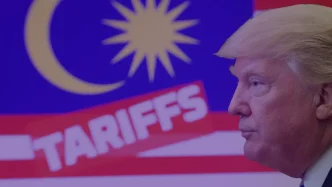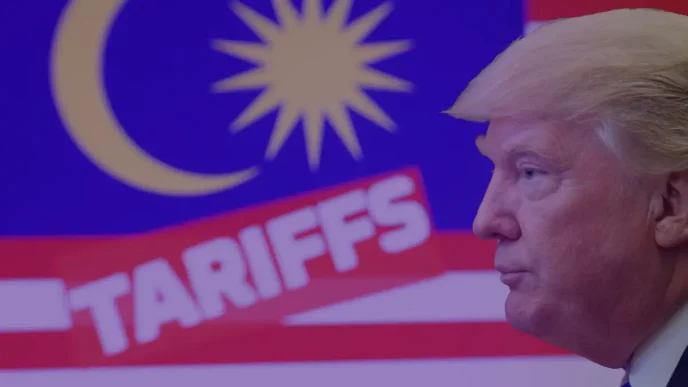Singapore has raised its economic growth forecast for 2025 to a range of 1.5% to 2.5%, up from a previous estimate of 0% to 2%, reflecting a stronger-than-expected performance in the first half of the year. The Ministry of Trade and Industry (MTI) announced the revised outlook on August 12, citing a robust 4.4% GDP growth in the second quarter, slightly higher than the initial estimate of 4.3%. Despite this optimism, the ministry cautioned that uncertainties in global trade and domestic economic conditions could temper growth in the latter half of 2025.
Strong First Half Fuels Optimism
The Singapore economy expanded by 4.3% in the first six months of 2025 compared to the same period last year, driven by key sectors such as wholesale trade, manufacturing, finance and insurance, and transportation and storage. The second quarter’s 4.4% growth followed a 4.1% increase in the first quarter, signaling sustained momentum. According to MTI, this performance prompted the upward revision of the full-year forecast, narrowing the range to reflect greater confidence in the city-state’s economic resilience.
The wholesale trade sector was a standout performer, growing by 4.7% year-on-year in the second quarter, up from 4% in the prior three months. This expansion was fueled by strong demand for electronic components, telecommunications equipment, and computers, as well as increased sales of petroleum and related products. On a quarter-on-quarter seasonally adjusted basis, the sector rebounded with a 2.8% growth, reversing a 0.5% contraction in the first quarter.
Manufacturing also contributed significantly, posting a 5.2% year-on-year increase in the second quarter, compared to 4.7% in the first. Growth was broad-based across most clusters, though output in chemicals and general manufacturing saw declines. However, on a seasonally adjusted basis, the sector contracted by 0.4% quarter-on-quarter, an improvement from the 5.2% decline in the previous period.
Despite these gains, not all sectors shared in the prosperity. The food and beverage services sector contracted by 0.5% year-on-year in the second quarter, following a 0.7% decline in the first. This downturn was attributed to reduced sales at restaurants and fast-food outlets, exacerbated by a sustained rise in outbound travel by Singaporeans, which has shifted consumer spending abroad.
Global Trade Tensions Cast a Shadow
While the first half of 2025 delivered encouraging results, MTI warned that the economic outlook for the remainder of the year remains uncertain, with risks leaning toward the downside. A significant factor is the unpredictability of US trade policies, particularly the imposition of a global baseline tariff of 10% and reciprocal tariffs on various economies, as announced by US President Donald Trump earlier this year. Although a 90-day pause in reciprocal tariffs and an extension of the tariff truce with China provided temporary relief, the potential for re-escalation looms large.
The ministry highlighted that de-escalation in trade tensions, including agreements between the US and partners such as the Eurozone, Japan, South Korea, and several Southeast Asian nations, has bolstered economic sentiment. This, combined with frontloading of production and exports to avoid future tariffs, offered a temporary boost to Singapore’s economy. However, as these effects wane and tariffs potentially take hold, global trade activity is expected to soften, impacting outward-oriented sectors like manufacturing and wholesale trade.
MTI identified three major risks to the global economy that could affect Singapore. First, a renewed escalation in tariffs could heighten economic uncertainty, prompting businesses and households to cut back on spending and hiring. Second, a sharper-than-expected tightening of global financial conditions might trigger destabilizing capital flows, exposing vulnerabilities in banking and financial systems. Third, geopolitical tensions could disrupt the supply of energy commodities, driving up global energy prices and adding pressure to inflation.
For Singapore, these external challenges are compounded by domestic headwinds. Slower growth in key sectors such as transportation and storage is anticipated due to softening global trade. The finance and insurance sector may also face challenges from fragile business confidence and tepid consumer spending, while consumer-facing industries could remain subdued as locals continue to spend abroad and domestic labor market conditions weaken.
US Tariffs and Transshipment Concerns
One area of particular concern is the US stance on transshipped goods, which could have implications for Singapore’s trade-dependent economy. During a media briefing, MTI Permanent Secretary Beh Swan Gin addressed questions about how proposed US measures might affect the city-state. He noted that the US definition of transshipment differs from that used by Singapore and other countries, making it difficult to predict the impact on specific sectors.
MTI Chief Economist Yong Yik Wei elaborated that sectors such as wholesale trade, transport, and storage, including port activity, shipping, air cargo, and freight forwarding, could be affected. However, without clarity on the scope of US policies, the full extent of the impact remains uncertain.
When asked about the possibility of a technical recession in 2025, Dr. Beh refrained from speculation. He acknowledged that the revised forecast of 1.5% to 2.5% implies a slowdown from the robust growth seen in the first half of the year, but emphasized that it would be premature to predict a recession at this stage.
Regional and Global Economic Context
Singapore’s economic trajectory is closely tied to global and regional trends, which MTI expects to moderate in the second half of 2025. In the US, growth is projected to weaken due to a cooling labor market and rising prices from tariff hikes, which could dampen consumer spending. The Eurozone faces potential export declines as tariffs take effect, though lower inflation and supportive monetary policies may bolster domestic demand. In China, export growth is expected to slow amid subdued global trade, even as domestic consumption and investment remain steady.
Southeast Asian economies, including Singapore’s neighbors, are also likely to feel the impact of US tariffs. The region’s reliance on global trade makes it vulnerable to shifts in policy and demand, particularly in sectors like manufacturing and logistics. MTI stressed that significant uncertainties persist, driven by the unpredictable timing and scope of sectoral tariffs, especially on pharmaceuticals and semiconductors.
Non-Oil Domestic Exports Show Resilience
In a separate report released on August 12, Enterprise Singapore announced that the city-state’s non-oil domestic exports (NODX) grew by 7.1% in the second quarter of 2025, up from 3.3% in the first quarter. Electronics exports led the charge with a 10.5% increase, driven by demand for personal computers, semiconductors, and disk media products. Non-electronic exports also rose by 6%, compared to 1.8% in the prior quarter, with significant contributions from non-monetary gold, specialized machinery, and ship and boat structures.
Despite this strong performance, Enterprise Singapore maintained its full-year NODX forecast at 1% to 3%, citing a weaker outlook for the second half of 2025. The agency noted that the tapering of frontloading activities and the potential implementation of reciprocal tariffs could weigh on global economic activity and trade. Additionally, sector-specific tariff risks and evolving economic uncertainty may dampen demand for Singapore’s exports.
Navigating an Uncertain Future
Singapore’s upgraded GDP growth forecast for 2025 reflects a blend of optimism and caution. The robust performance in the first half of the year, underpinned by key sectors like wholesale trade and manufacturing, has provided a solid foundation. However, the specter of global trade tensions, particularly US tariffs and geopolitical risks, casts a shadow over the outlook for the remainder of the year.
MTI emphasized its commitment to closely monitor developments in both global and domestic economies, ready to adjust forecasts if necessary. For now, Singapore stands at a crossroads, balancing the gains of early 2025 against the challenges that lie ahead. As trade policies evolve and economic uncertainties persist, the city-state’s ability to adapt will be crucial in sustaining its growth trajectory.













